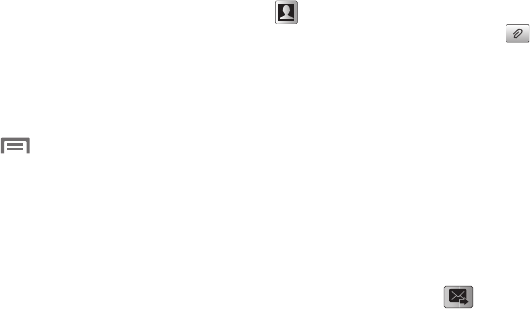User manual
Table Of Contents
- SCH-R830
- Table of Contents
- Section 1: Getting Started
- Section 2: Understanding Your Phone
- Section 3: Call Functions
- Section 4: Entering Text
- Section 5: Accounts and Contacts
- Section 6: Messaging
- Section 7: Connections
- Section 8: Applications and Widgets
- Accessing Applications
- Customizing the Apps Screens
- Calculator
- Calendar
- Camera
- Chrome
- Clock
- Contacts
- Downloads
- Gallery
- Gmail
- Google+
- Internet
- Latitude
- Local
- Maps
- Media Hub
- Memo
- Messaging
- Messenger
- More services
- Music Player
- My Files
- Navigation
- Phone
- Play Books
- Play Magazines
- Play Movies & TV
- Play Music
- Play Store
- S Voice
- Samsung Apps
- Search
- Settings
- Talk
- Video Player
- Voice Recorder
- VPN Client
- Wallet
- YouTube
- Accessing Widgets
- Accessing Applications
- Section 9: Settings
- Accessing Settings
- Wireless and network
- Device
- Personal
- System
- Section 10: Health and Safety Information
- Exposure to Radio Frequency (RF) Signals
- Do cell phones pose a health hazard?
- Research Results to Date: Is there a connection between RF and certain health problems?
- Interphone Study
- International Cohort Study on Mobile Phone Users (COSMOS)
- Risk of Brain Cancer from Exposure to Radio Frequency Fields in Childhood and Adolescence (MOBI-KIDS)
- Surveillance, Epidemiology, and End Results (SEER) Program of the National Cancer Institute
- Cell Phone Industry Actions
- Reducing Exposure: Hands-Free Kits and Other Accessories
- Children and Cell Phones
- Do cell phones pose a health hazard?
- Specific Absorption Rate (SAR) Certification Information
- FCC Part 15 Information to User
- Commercial Mobile Alerting System (CMAS)
- Smart Practices While Driving
- Battery Use and Safety
- Samsung Mobile Products and Recycling
- UL Certified Travel Charger
- Display / Touch-Screen
- GPS & AGPS
- Emergency Calls
- Care and Maintenance
- Responsible Listening
- Operating Environment
- FCC Hearing Aid Compatibility (HAC) Regulations for Wireless Devices
- Restricting Children's Access to Your Mobile Device
- FCC Notice and Cautions
- Other Important Safety Information
- Exposure to Radio Frequency (RF) Signals
- Section 11: Warranty Information
- Index

Messaging 69
• Address the message to a Contacts Group
: Touch
➔
Groups
, then select the desired Group and the desired
contacts. (For more information, refer to
“Sending a
Message to Group Members”
on page 67.)
3. Touch the
Enter message
field and compose your
message. While composing a message, touch
Menu
for these options:
•Insert smiley
: Add a text emoticon to the message.
•Add Text
: Insert Contact information, Calendar event
information, or Memo text into this message.
•Preview
: View this message as the recipient(s) will see it.
•View contact
: View contact information for the recipient(s).
• Add slide
: Add or remove a slide. Slides hold pictures or other
media (adding a slide converts the message to MMS).
• Add subject
: Add a subject field to the message and enter a
subject. (This option also converts the message to MMS.)
•Duration
: Set the time the current slide of this message will
appear in the screen.
•Layout
: Choose whether the text appears on the top or bottom
of this message.
•Discard
: Cancel the message.
4. To add content to the message, some of which convert
it to MMS, touch .
–
Images
: Add a picture.
–
Take picture
: Take a new picture.
–
Video
: Add a video.
–
Record video
: Record a new video.
–
Audio
: Add a sound clip.
–
Record audio
: Create a new audio clip.
–
Memo
: Add memo text.
–
Calendar
: Add a Calendar Event text.
–
Location
: Add location information.
–
Contacts
: Add Contact entry information.
5. Touch to send the message.










